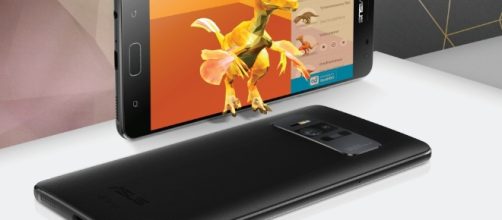ASUS began its much-acclaimed impact in the technology sector by powering other company’s laptops. Later, it moved on to manufacturing its own line-up. It didn’t take long for ASUS to the array into the smartphone sector either. The most notable achievement (at least as far as the smartphone market is concerned) made by ASUS is undeniably the introduction of its ZenFone AR smartphone.
The ZenFone AR in a nutshell
Asus Zenfone AR is recognized by most as the first smartphone in the world to be carrying support for both, Google’s Tango and Daydream systems.
Google introduced Tango earlier last year, in the form of a technology that makes the augmented reality (AR) technology functional. Whereas, Daydream is Google’s extended virtual reality (VR) project. The ASUS ZenFone AR is going to change the typical smartphone experience. With the help of this smartphone, one can measure objects, visualize tables, sofas or any other furniture, play virtual reality games and more, all using a smartphone. Tango also adds the ability of motion tracking to the ASUS ZenFone AR. Additionally, the smartphone with its depth-sensing cameras is specifically designed to track areas and keep them in their memories so that they can be recognized by the system later. What makes things better is the fact that the smartphone also comes with the ability to map physical spaces.
Apart from tracking objects, the ASUS ZenFone AR can essentially portray visual effects in a non-virtual environment.
TriCam system feature
Moreover, the smartphone comes packed with a TriCam system that includes three different cameras wherein one sensor is 23MP, and other two are motion tracking and depth-sensing cameras respectively. The smartphone’s rear camera (which is the main one) comes included with the support for TriTech plus auto-focus system, 4-axis optical image stabilization coupled with 3-axis electronic image stabilization. The audio features of the ASUS ZenFone AR are impeccable as well as the device flaunts five external magnet speakers. The latter further comes with the support of Hi-Res audio and DTS virtual surround sound.
This makes the whole AR and VR experience highly impressive.
Specs of the smartphone
As far as the other specifications are concerned, the ASUS ZenFone AR – which was launched back in June 2017 – features a 5.7-inch Quad HD super AMOLED capacitive touch-screen display with a resolution of 2560 x 1440 pixels. The smartphone is further protected by Corning Gorilla Glass display. The device is powered by a 2.35GHz N/A core Qualcomm Snapdragon 821 processor and comes in storage options of 6GB and 8GB of RAM. The device further offers 32GB, 64GB, and 256GB of internal storage options. The internal storage can be further expanded up to 2TB via its microSD card option. The device runs on Android 7.0 Nougat operating system and houses a 3,300mAh battery.


